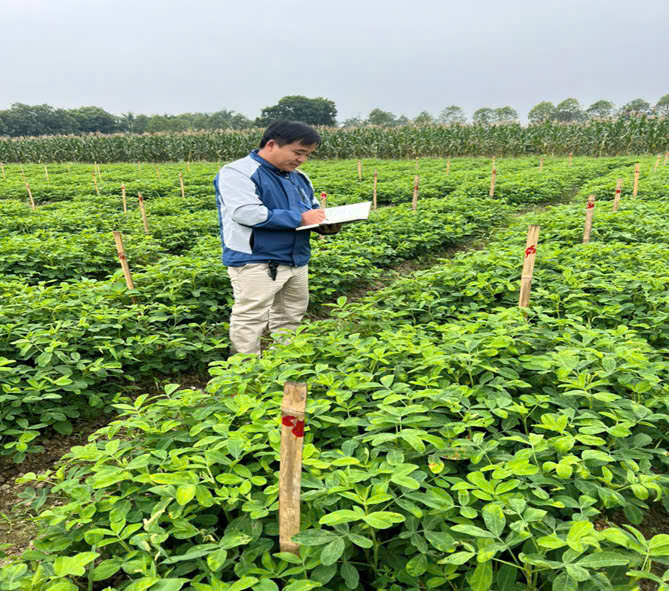(BAFU) – On April 16th, 2021, PhD. candidate Thi Thuy Ha Nguyen (a lecturer of Agronomy Faculty, Bac Giang Agriculture and Forestry University) successfully defended her doctoral thesis titled: “Investigating Australian wild rice for improvement of salinity stress tolerance in cultivated rice Oryza sativa L.” at the Faculty of Science, Queensland University of Technology, Australia (QUT). Her thesis was supervised by Prof. Sagadevan Mundree, Dr. Linh Thi My Hoang and Dr. Sudipta Das Bhowmik.

Thi Thuy Ha Nguyen – Lecturer of BAFU received a PhD from Queensland University of Technology, Australia
THE NEW SCIENTIFIC FINDINGS:
This study investigated the salinity tolerance of three Australian wild rice species and used the obtained knowledge to improve salinity tolerance in cultivated rice. Eighteen Australian wild rice accessions belonging to Oryza australiensis, Oryza meridionalis, and Oryza rufipogon were initially screened along with three cultivated rice cultivars at a high salt concentration, 200 mM NaCl.
The findings on the contrast between wild rice and cultivated rice Nipponbare regarding proline-related gene expression patternsled to our hypothesis that disrupting expression of OsProDH gene in Nipponbare might increase proline accumulation and improve salt tolerance in this salt-sensitive cultivar. Gene editing tool CRISPR/Cas9, therefore, was used to generate edited OsProDH Nipponbare lines. A tRNA processing system was used to construct a polycistronic gene PTG carrying a tandem of two tRNA-gRNA targeting two specific sites on the sequence of OsProDH gene in Nipponbare. A total of 65 putative OsProDH edited Nipponbare rice lines were generated using Agrobacterium-mediated transformation of rice calli. A total of 27 putative edited lines were confirmed edited by sequencing. Results showed that the PTG Cas9 construct resulted in a high editing efficiency in mutant lines with different types of site-specific mutations, including nucleotide substitution, one or two nucleotides deletion, and large fragment deletion.
In addition, higher proline content was found in most mutant lines. However, abilities to survive and cope with salinity stress of edited lines depended upon the mutagenesis and type of mutations on the OsProDH gene. The morphological and physiological assessment suggested that mutant lines with edit on one allele, leading to a change in amino acid from Glutamine to Lysine, exhibited better salinity tolerance. Furthermore, these lines showed a better ability to maintain net photosynthesis, RWC, lower electrolyte leakage, osmotic potential during exposure to salinity stress. Notably, high proline content in mutant lines with enhanced salinity tolerance did not cause a reduction in yield at non-stressed conditions in comparison with WT Nipponbare.
This study provided evidence of the morphological and physiological basis of salt tolerance in wild rice O. australiensis and suggested a potential strategy for improving salt tolerance in cultivated rice. It also contributed to using genome editing tools to generate salt-tolerant mutant lines in rice that can be applied to other crops.
Edited by Information and Library Center – BAFU








